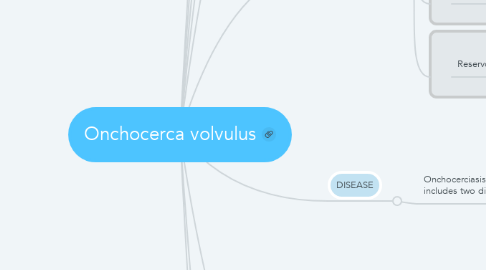
1. Microfilaria
1.1. 280-330 x 6-9 µm unsheathed body head is characteristically expanded cuticle is striated head and tail are free of nuclei cephalic space (1.5-2:1) they have no periodicity
2. Adult Male
2.1. 20-40 x 0.15-0.2 mm variable number of anal papillae and 2 spicules threadlike filarial worm both ends of the body are tapered the anterior end has 2 circles of 4 papillae and 1 large lateral pair cuticle has characteristic annular thickening (rugae)
3. Adult Female
3.1. 300-500 x 0.25-0.4 mm vulval opening at .85 mm from the anterior end threadlike filarial worm both ends of the body are tapered the anterior end has 2 circles of 4 papillae and 1 large lateral pair cuticle has characteristic annular thickening (rugae)
4. TRANSMISSION
4.1. O.volvulus is spread through the bite of the blackfly (buffalo giant) which breeds in fast-flowing rivers, streams and the lands along the river bank.
5. HABITAT
5.1. Adults: Inhabit the subcutaneous tissue (nodule) especially at the junction of the bones, scalp, pelvis, chest and spine. Microfilariae: : Inhabit the skin/ eye
6. LIFE CYCLE
6.1. Infective stage: infective microfilariae inside the vector
6.2. Diagnostic stage: microfilarae in skin snip
6.3. Intermediate host(s): Simulium spp.,
6.4. Reservoir host: infected persons
7. DISEASE
7.1. Onchocerciasis includes two diseases:
7.1.1. liver blindness
7.1.2. onchodermatitis
8. CLINICAL PICTURE
8.1. The clinical manifestations and complications are mainly due to the microfilarae and not the worms
8.1.1. Painless and disfiguring nodules in the face, neck, limbs and trunk
8.1.2. Acute inflammatory reactions affecting the face, eye, ears and neck. The skin is hot, painful with pruritus
8.1.3. Inflammation subsides and the skin thickened and assumes violaceous color (onchodermatitis). Onchodermatitis assume different pattern indifferent locality
8.1.4. Eye affection (keratitis, opacities and complete blindness), usually noticed in African and South American patients.
9. DIAGNOSTIC PROCEDURES
9.1. Laboratory
9.1.1. The only sure diagnostic method is the skin snip. Biopsy should be placed in saline and teased to liberate microfilariae and examined under microscope
9.1.2. In light infection Mazzotti test is applied i.e. oral administration of 5g DEC results in local pruritus
9.1.3. .Ultrasonography could be used for detection of deep onchocercal nodules
